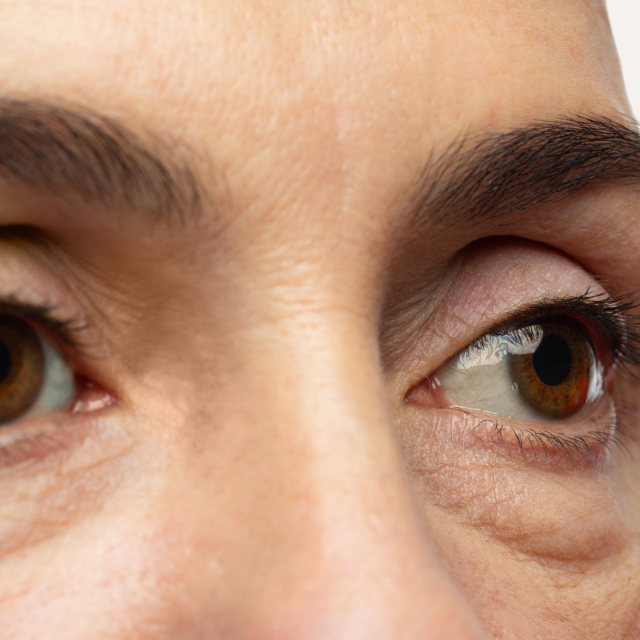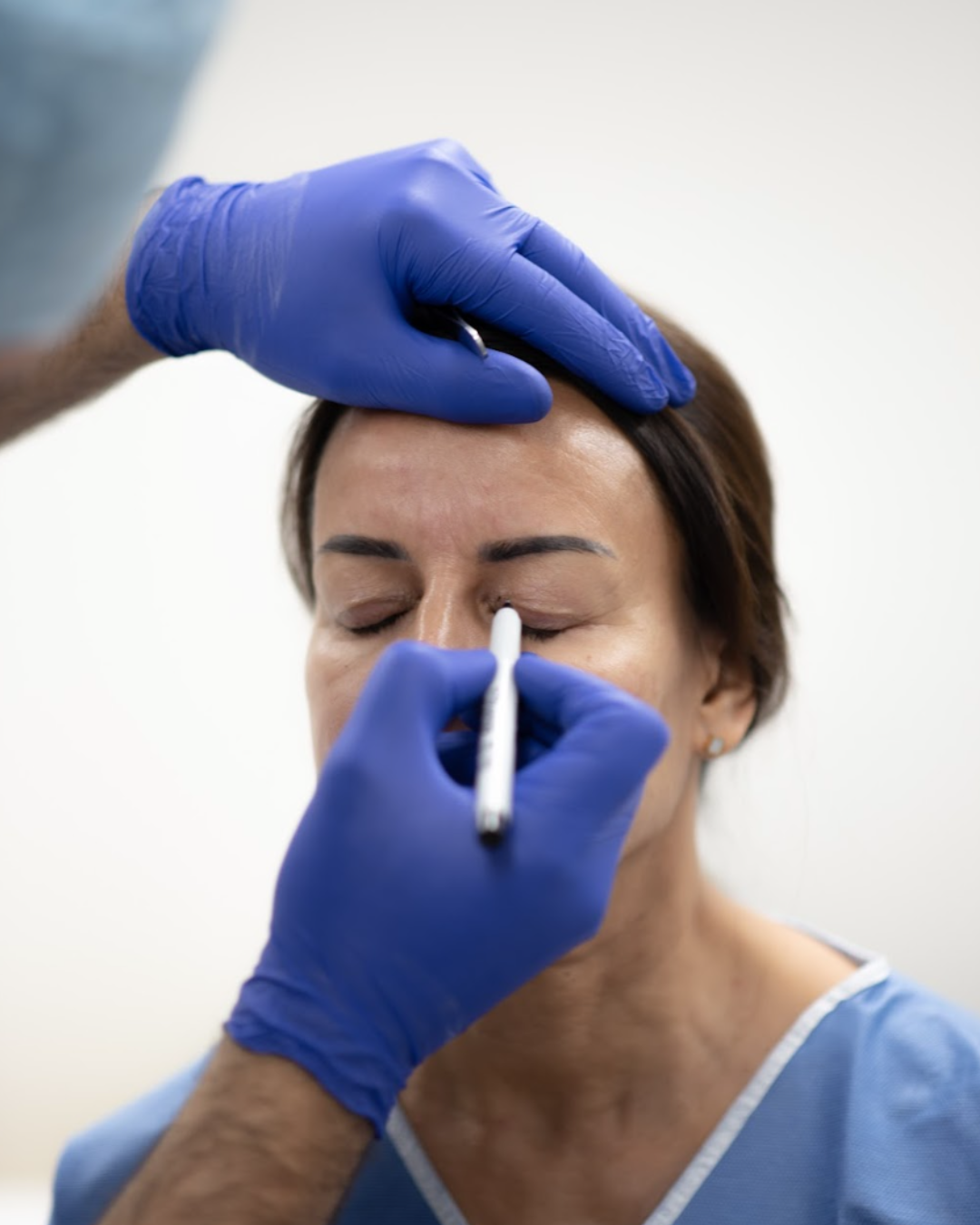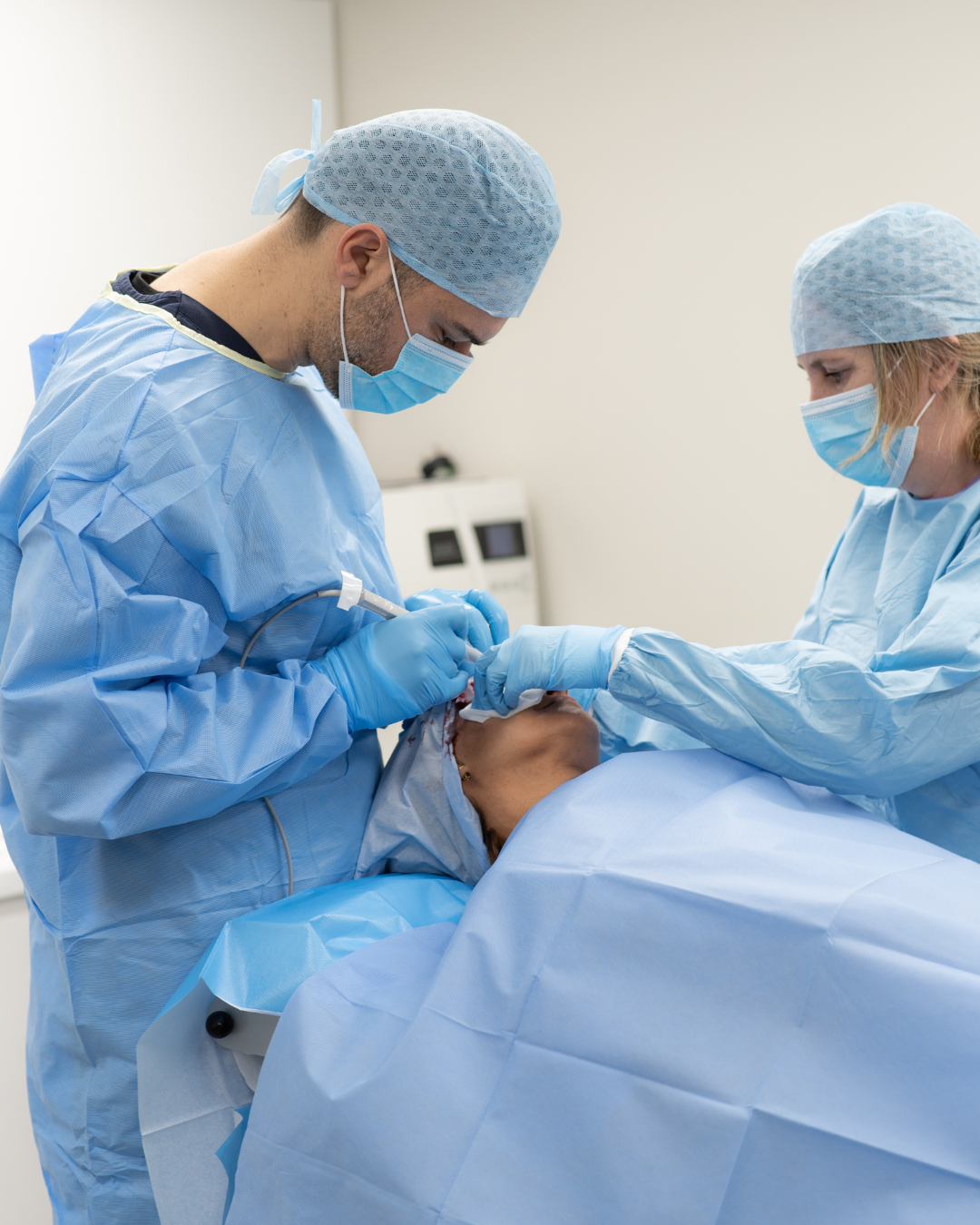
Lower blepharoplasty reduces under-eye bags, puffiness, and dark circles by removing or redistributing fat and tightening the lower eyelid area.

Lower blepharoplasty is a cosmetic surgery that addresses ageing and fatigue-related issues in the area beneath the eyes. Over time, factors such as genetics, lifestyle, and ageing can lead to fat accumulation, fluid retention, and skin laxity under the eyes, resulting in puffiness, dark circles, and fine lines. This surgical approach carefully removes or repositions excess fat, smooths and tightens the skin, and reduces wrinkles. By rejuvenating the lower eyelid contour, lower blepharoplasty achieves a smooth, natural look that enhances overall facial balance.
This procedure addresses several specific concerns:
Lower blepharoplasty surgery at SRGN Clinic uses advanced techniques to enhance the under-eye area subtly, creating a refreshed and youthful look tailored to your unique facial structure.
Lower blepharoplasty is ideal for individuals concerned with under-eye issues that make them look older, tired, or unwell. If you experience any of the following, this treatment may be suitable for you:
Our personalised approach at SRGN Clinic ensures that each treatment plan is customised to address your specific needs and desired outcomes.

Recovery from lower blepharoplasty is relatively quick. Following the procedure, you may experience mild swelling, bruising, and slight discomfort. Applying cold compresses and elevating your head while sleeping can help minimise swelling. Most patients return to regular daily activities within a week. It’s also recommended to avoid strenuous activities for the first two weeks to allow optimal healing. Full results become visible within a few weeks as the under-eye area continues to settle, revealing a smoother and refreshed look.
Lower blepharoplasty offers long-lasting benefits, providing a noticeable reduction in under-eye puffiness, dark circles, and wrinkles. Key benefits include:
While lower blepharoplasty achieves enduring results, the natural ageing process will gradually continue. Many patients enjoy the rejuvenated look for years, often with no need for additional treatments.
Lower blepharoplasty is a highly effective procedure that typically lasts 1–2 hours and is often performed under local anaesthesia. Here’s a step-by-step overview of the process:
Step 1 – Anaesthesia: Local anaesthesia is administered to ensure comfort during the procedure, although sedation options may be available for those who prefer it.
Step 2 – The Incision: A small incision is made just below the lower lash line or inside the lower eyelid, ensuring minimal visible scarring.
Step 3 – Fat Removal or Repositioning: Excess fat is carefully removed or repositioned to create a smooth, natural contour. If necessary, excess skin is also removed to tighten the lower eyelid area.
Step 4 – Closing the Incision: The incision is meticulously closed with fine sutures. If the incision is made inside the eyelid (transconjunctival approach), there is no visible external scar.
Step 5 – Seeing the Results: The surgery enhances the under-eye area, creating a refreshed look that smooths out puffiness and minimises dark circles.
What to Expect After Lower Blepharoplasty Surgery
Recovery from lower blepharoplasty is generally straightforward, but following aftercare instructions will help optimise healing and results:
Swelling and Bruising: Mild swelling and bruising around the lower eyelid area are normal and typically last 1–2 weeks. Cold compresses can help reduce these effects.
Discomfort: Minor discomfort, itching, or tightness around the eyes is common but manageable with over-the-counter pain relief
Follow-up Appointments: Stitches are usually removed within 5–7 days, and follow-up appointments allow us to monitor healing and ensure optimal results.
Most patients can return to light activities within a week, although it’s recommended to avoid strenuous activities for 2–3 weeks to allow for full recovery.
Lower blepharoplasty results are long-lasting, with many patients enjoying the benefits for 10-15 years. The procedure provides a significant and durable improvement, though individual longevity may vary.
The procedure is generally well-tolerated, as anaesthesia is administered to ensure comfort. Post-procedure, patients may experience mild discomfort, which typically subsides within a few days.
Most patients return to normal activities within a week. Swelling and bruising decrease significantly within the first two weeks, with full healing and results visible after a few months.
The procedure typically involves incisions just beneath the lash line or inside the lower eyelid, resulting in minimal scarring that is usually undetectable after healing.
While lower blepharoplasty is generally safe, risks may include infection, scarring, or temporary changes in eyelid sensation. Choosing an experienced surgeon, such as Dr. Ayad Harb, helps to minimise these risks and ensures optimal results.